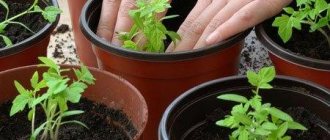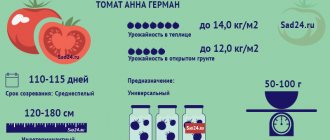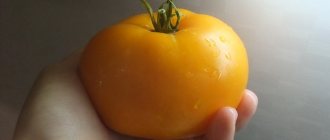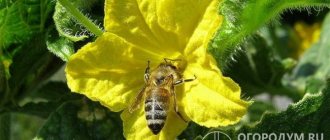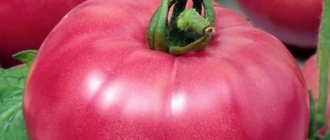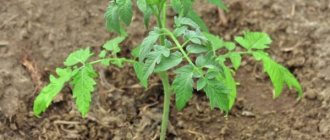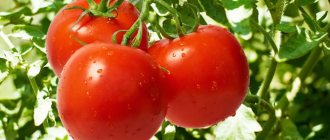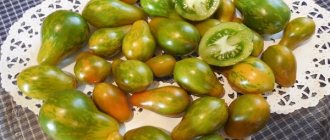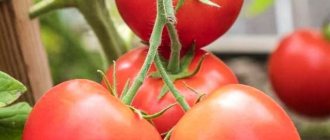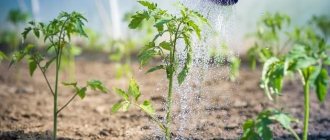Description of the tomato variety Unique Kulchitsky, features of cultivation and care
True gourmets who want to plant something in their summer cottage that their neighbors don’t have will love the Unique Kulchitsky tomato. Not every gardener has heard of it yet, but the reviews from those who planted tomatoes of this variety in their beds are enthusiastic. The only difficulty is getting seed material, which is not sold in every store.
Description of the variety
The Unique tomato belongs to the early ripening indeterminate varieties. Suitable for growing in open and closed ground. In greenhouses, the height of the bush reaches 2 meters, and in open beds - 1.5 meters. Potato type leaves. Resistance to typical diseases is high. Fruiting is long lasting.
The description of the Unique tomato says that its fruits are round in shape and medium in size (on average 80 grams). When ripe, tomatoes acquire a rich red color. The skin is smooth, dense, but thin. The pulp is oily, with a high dry matter content. The variety has excellent taste characteristics and a strong classic tomato aroma.
The fruits are suitable for both fresh consumption and whole-fruit canning, as well as all types of processing.
In addition to its uniqueness and rarity, the Kulchitsky tomato is characterized by excellent productivity even under unfavorable weather conditions. Each bush is capable of forming dozens of clusters, each of which bears up to 12 fruits. Tomatoes are formed of the same size and shape, beautiful, even, with excellent commercial qualities. The plant is capable of bearing fruit until the first frost.
Advantages and disadvantages
Tomato Unique vegetable grower Kulchitsky has many advantages over competitors. The main ones are:
- early dates of fruiting;
- friendly ripening of tomatoes;
- wonderful taste of ripe fruits;
- high productivity;
- low maintenance requirements;
- disease resistance;
- suitability for long-distance transportation;
- presentation of the fruit;
- universal purpose of tomatoes.
According to reviews from gardeners, no particular shortcomings were identified. They only highlight the need for mandatory tying and shaping of the bush.
Features of cultivation and care
To obtain an early harvest, Unique tomato varieties are sown as seedlings in late March - early April. If you plan to grow it in a greenhouse, then the seeds can be sown no earlier than mid-February. Tomatoes love heat very much, so temperature is an important indicator for them.
The optimal temperature for growing Kulchitsky tomatoes is 20–25 °C. The seedlings are placed in a lighted place. Otherwise, young plants will stretch out.
Tomatoes like infrequent, but abundant watering. During the formation of the ovary, special attention is paid to this parameter. Carefully monitor the condition of the top layer of soil, preventing it from drying out. High humidity promotes the development of fungal diseases and plant roots rot.
The Unique tomato is not too picky about the soil, however, it prefers fertilized areas with good air and moisture permeability. Do not use fresh cow manure or overdo it with organic fertilizers. Feeding during the season is not necessary, but Kulchitsky tomatoes respond well to the application of mineral fertilizers. Due to excess nitrogen, fruiting is delayed; tomatoes are formed in small quantities, but the tops and leaves are developed and have a rich green color.
Tomato Unique requires mandatory feeding with magnesium. This element is required most of all during the period of fruit growth and ripening.
Kulchitsky tomatoes require mandatory tying. To do this, use the trellis method or install separate additional supports for each bush. In order for the fruits to set and ripen as early as possible and have a marketable appearance, the bushes must be formed and pinched.
It is worth noting that the Unique tomato from vegetable grower Kulchitsky is not a hybrid. Thanks to this, gardeners are given the opportunity to independently prepare seed in the future.
It is also worth noting that the variety is suitable for both growing on private plots and on farms.
Advantages and disadvantages
Tomato Unique vegetable grower Kulchitsky has many advantages over competitors. The main ones are:
- early dates of fruiting;
- friendly ripening of tomatoes;
- wonderful taste of ripe fruits;
- high productivity;
- low maintenance requirements;
- disease resistance;
- suitability for long-distance transportation;
- presentation of the fruit;
- universal purpose of tomatoes.
According to reviews from gardeners, no particular shortcomings were identified. They only highlight the need for mandatory tying and shaping of the bush.
Tomato Unique Kulchitsky
photo by Valentina Redko
Description and characteristics of the tomato variety Unique Kulchitsky, reviews, photos
A mid-early, high-yielding amateur tomato variety from vegetable grower M.G. Kulchitsky. from Novorossiysk. It can be grown in a greenhouse or in open ground, with the obligatory garter to a support. Has an extended fruiting period.
A bush of indeterminate type, 1.5-1.8 meters high in closed ground. We recommend forming into 3 stems. The brushes have 6-8 ovaries (up to 12). Potato type leaf.
Basic qualities of fruits
The fruits are round, dense, smooth, almost all of the same size, red in color at maturity, weighing 70-90 grams, juicy, with a pleasant tomato taste. Excellent for canning whole fruits. Ripe tomatoes can remain on the bush for a long time without losing their presentation and taste.
The main advantage of this tomato is its high yield, as well as the ideal shape and consistency of the fruit for canning. Excellent tying in hot weather.
Disadvantage : mediocre taste.
Features of cultivation, planting and care
photo author Svetlana Vodyakova
We recommend sowing the seeds of this tomato variety for seedlings 55-60 days before the intended planting in the ground. Seedlings dive at the stage of two true leaves. When planting seedlings in a permanent place per 1 sq. It is recommended to place up to 3 plants per meter of land.
Further care for tomatoes consists of timely watering, fertilizing with complex mineral fertilizer, pinching and preventive measures to protect against diseases and pests.
When growing tomatoes in a greenhouse, we recommend installing a drip irrigation system - this will save your time and effort, as well as increase plant productivity and reduce the risk of late blight.
If you grew Unique Kulchitsky tomatoes, please write whether you liked them or not. What was the yield and taste of the fruits like under your climatic conditions? How do you rate the disease resistance of this variety? Briefly describe the advantages and disadvantages of this tomato in your opinion. If possible, attach a photo of your tomatoes to your comment. Thank you!
Your reviews of the Unique Kulchitsky tomato and additions to the description will help many gardeners evaluate this variety more objectively and decide whether it is worth planting or not.
General characteristics of the plant
The bush is of an indeterminate type, tall, and can reach 1.8 m in a season, but in open ground it is recommended to pinch the stem in mid-August to allow the already formed ovaries to swell. Fruiting is extended, despite the fact that the first ripe tomatoes can be harvested already 3.5 months after sowing the seeds for seedlings. The description of the variety notes that the bush constantly blooms and forms many clusters of fruits throughout the summer.
The flowers of the plant do not suffer at all from high air temperatures and can be well pollinated both in the greenhouse and in the open ground. With a sharp change in weather in the middle of summer, when cold rains begin after hot days, Unique Kulchitsky continues to bear fruit.
Reviews from gardeners who have grown the variety for several years in a row indicate that its yield remains constant even in years unfavorable for tomatoes.
The average yield reaches 5-6 kg from each bush. To increase it, it is recommended to form plants into 2-3 stems and tie them to a trellis. You can place 4 bushes per 1 m².
Read also: Royal norfolk pelargonium photo
The variety is resistant to major tomato diseases and is not affected by the tobacco mosaic virus. When late blight is widespread, it is recommended to remove some of the leaves in the lower 1/3 of the stem to ensure better ventilation of the plantation.
Unique Kulchytskogo tomato
12.10.2018
there is a danger of a dark leg coming out into the light, and all the seedlings will die. The windows of my living space face northwest; among other things, they are blocked by trees. There is not enough natural lighting, and I have to use a fluorescent lamp with 2 LB-40 lamps as backlight. I place this lamp 10 centimeters higher than the seedlings, raising it as the seedlings grow. Electricity costs are low, because there is practically no other source of light to turn on for household chores.
I sow seeds at different times: I sow late types in the middle of February, early ones in March. I grow tomatoes both in open and confined ground. I tested a large number of planting and care methods. I settled on Igor Maslov’s method (“PH” No. 1-88). This is a very effective technique, although I think that not many varieties of tall tomatoes are suitable for growing using this method. In these species, like Hybrid 2, and similar ones, the fruits on the stepsons do not have time to ripen, and it is better to grow them in a different way: plant 2 seedling bushes at a distance of 30 centimes. among themselves and form bushes into 2 stems of any kind. The spacing between rows is 1 m.
I feed the tomato bushes every 2 weeks. Before fruiting, use ash infusion and superphosphate, and during the period of fruit filling, use mullein infusion, diluted 1:10, or pigeon droppings, diluted 1:20.
I would like to remind you again about one relevant and necessary method. This is mulching (covering) the beds with old leaves or straw. I have learned from my own experience that if the beds are covered with 10-15 centimeters of old leaves, the increase in yield will be quite significant. Rotting, the leaves will arrange the earth; When watering, a soil crust does not appear. In this way, there is no need for loosening and weeding.
Tomato seeds from collectors
The leaves prevent water evaporation and prevent dripping in greenhouses, which extremely spoils tomatoes. The intervals between waterings increase by 2-3 times, and this is especially important for gardeners whose plots are located far from the building, and they have the opportunity to water them only once a week. There are a large number of such gardeners.
And already about the views. There are a lot of them: they are divided according to purpose, taste, color, softness, density. Once a year, testing up to 10-15 new species, I realized that any species is good from its own point of view. Although from this large number there are also species worthy of special attention. For example, for greenhouses: Unique Kulchitsky, Cosmonaut Volkov, Hybrid 2 Tarasenko and others. For open ground: Iris, Grape, Strong, Tomilla, Dana, Tigrella, Indoor: Tsi-fomandra Peruvian, Japanese indoor, Minibel, Bush tomato.
Saprunov Viktor Ivanovich, amateur vegetable grower
In the land of evergreen tomatoes
Belarus is often jokingly called the land of evergreen tomatoes, and the Vitebsk region even more so. It’s good if your garden is protected from cold winds by the natural landscape or has a southern slope. Then it still makes sense to cultivate peppers and tomatoes, but what if not? However, don't despair. Try to use the simple and accessible technology that I want to offer you. For several years now I have been able to obtain excellent harvests. The first thing I advise you to pay attention to is the selection of varieties suitable for our northern conditions. My favorite varieties: Salad, Unique, Kulchitsky, Vasilisa, Gift of Georgia, Black plum, Orange pear, Yellow icicle, Marhot brush, Garten Freude and others. They have a good taste, are suitable for pickling and canning, and most importantly, are resistant to disease.
I treat the seeds and sow them at the end of March or early April. I take the soil disinfected under natural conditions - from a garlic bed. I mix it with river sand in a 1:1 ratio, and add a glass of sifted ash to a bucket of this mixture. I mix everything, sift it through a coarse sieve and scatter it into old frying pans or other necessarily small dishes. This provides a number of advantages: it is more convenient to water, transfer from one room to another, and most importantly, the roots of plants develop not deeper, but wider.

